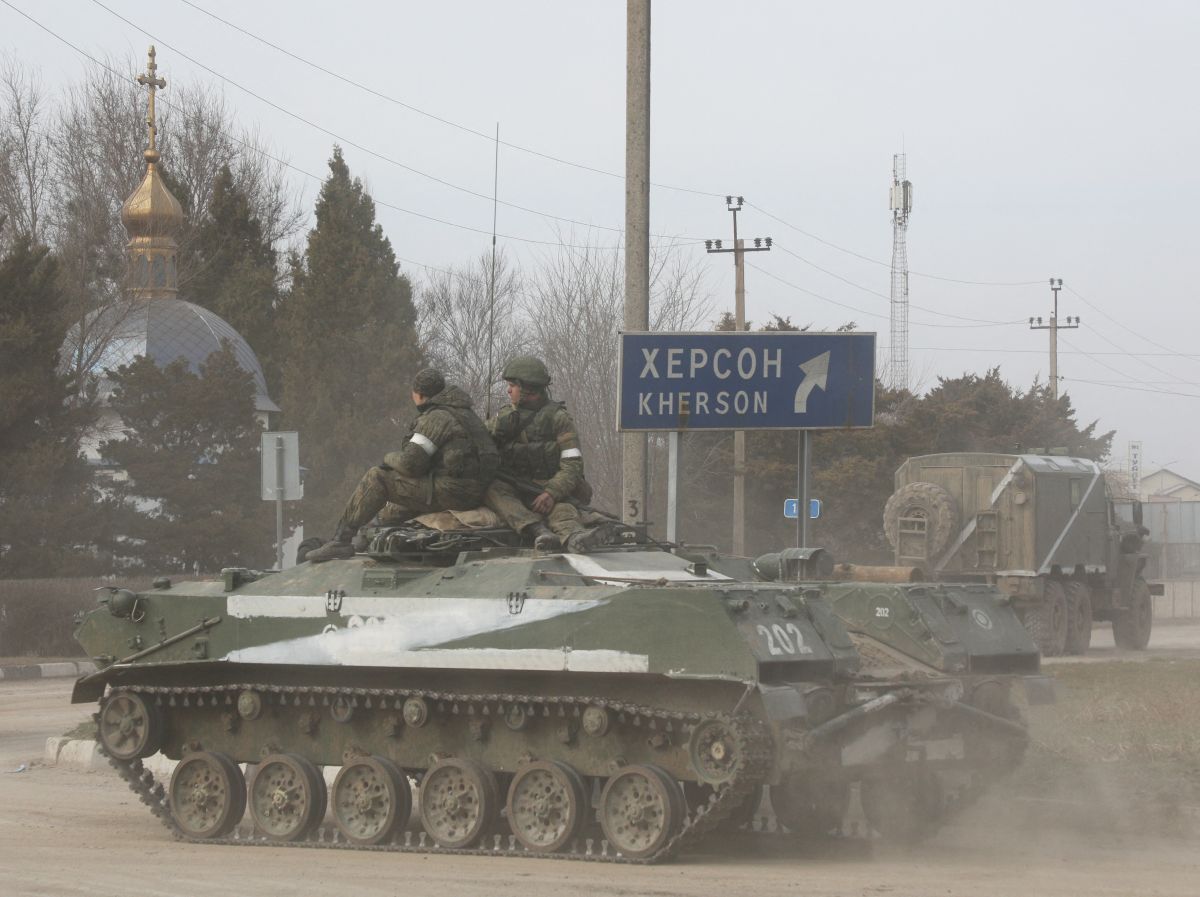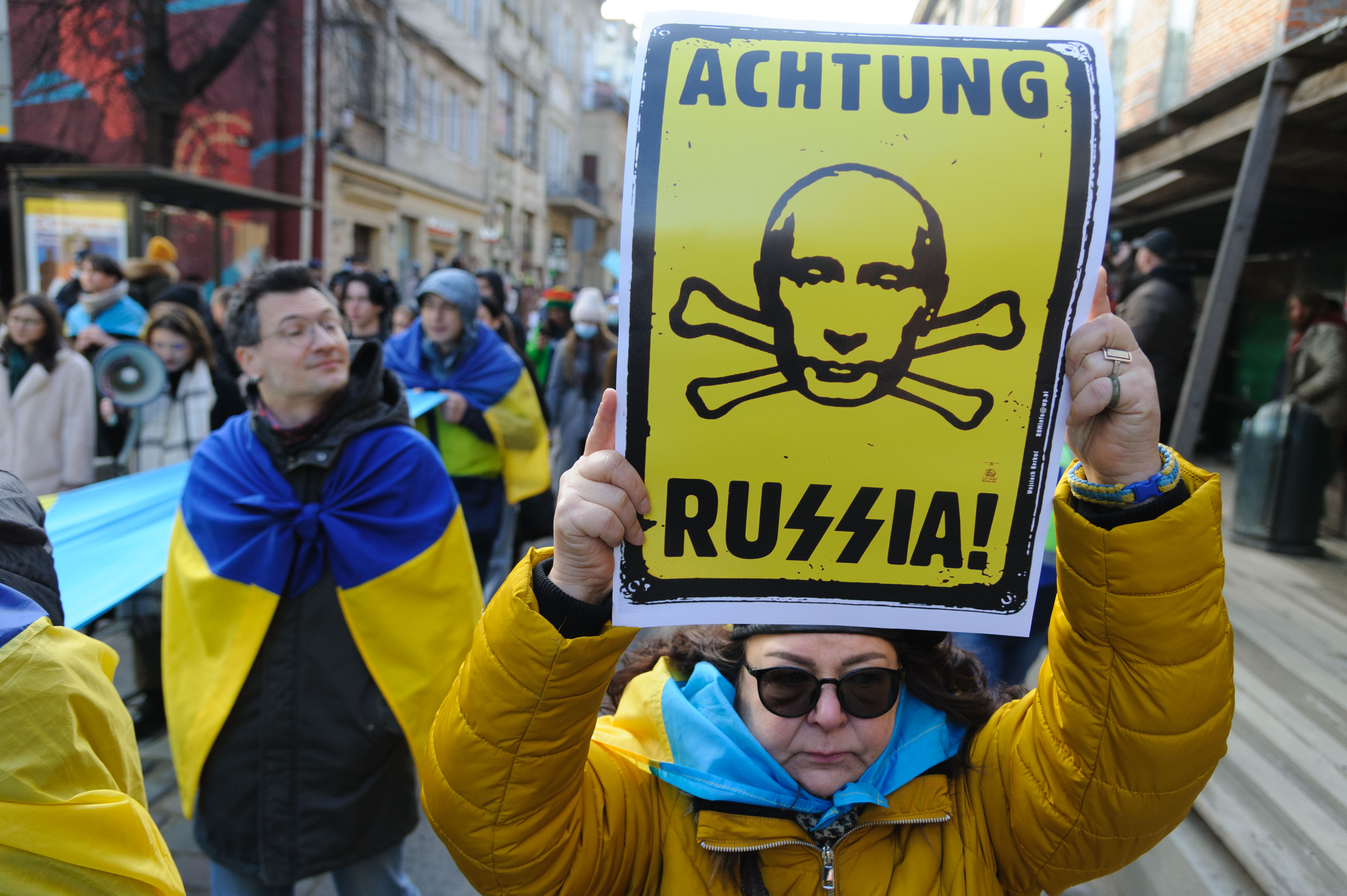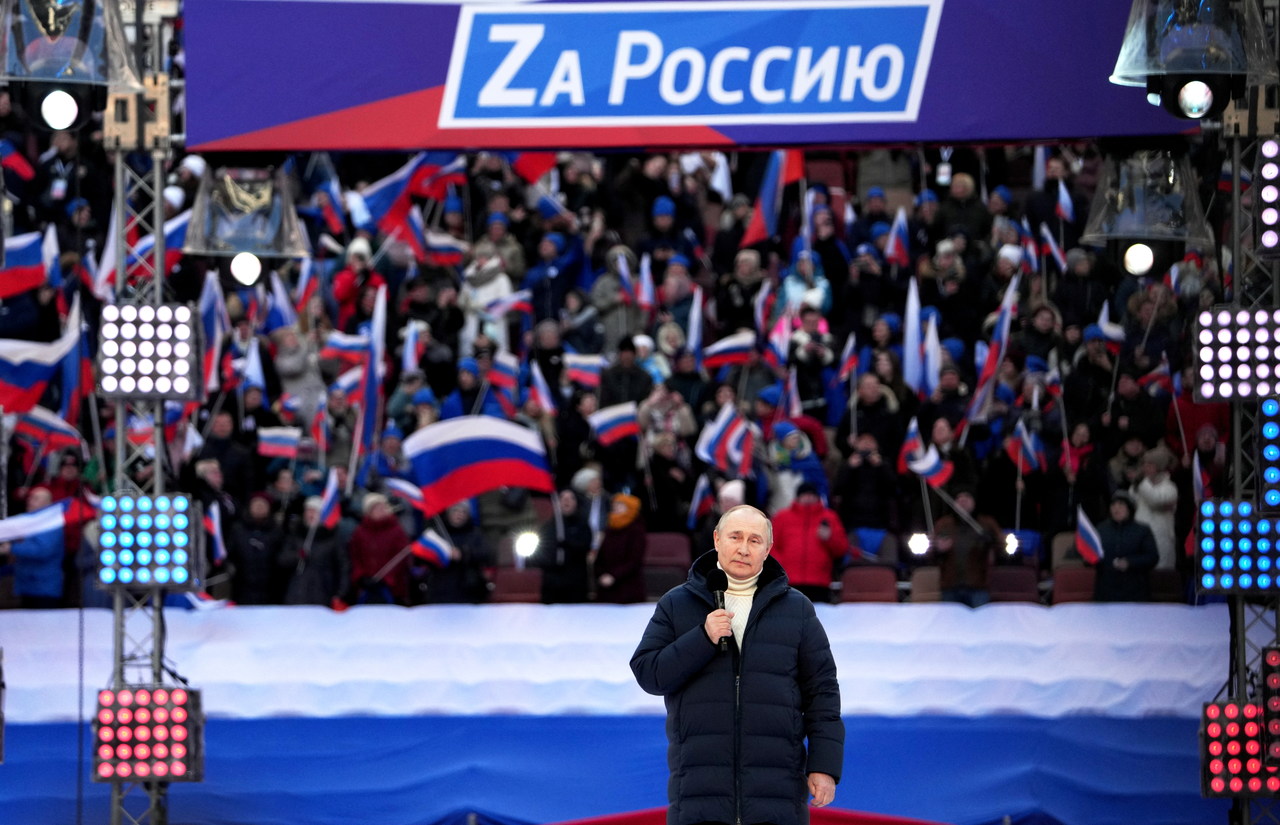Ukraine's Wartime Information Strategy
Since the beginning of the latest hostilities with Russia, the Ukrainian authorities have been carrying out a coherent strategic communication aimed at their own citizens, Russian society, and the international community. Coherent communication builds social morale and has an impact on the policy of the countries supporting Ukraine. It is also an instrument in the fight against Russian disinformation. The importance of having effective tools of strategic communication is also growing in frontline states, such as Poland, which are exposed to disinformation and hybrid threats from Russia.
 MARKO DJURICA / Reuters/ FORUM
MARKO DJURICA / Reuters/ FORUM
Since the start of the invasion, the strategic communication of the Ukrainian authorities regarding the military situation has been coordinated by the presidential centre. Statements by representatives of the Presidential Administration, ministries, General Staff, and local authorities form a coherent whole and are aimed at maintaining the high morale of society and the armed forces. The aim of these activities is also to persuade the international community to better support Ukraine in opposing the Russian aggression and to inform about war crimes committed by the Russians, such as the massacre of civilians in Bucha.
In addition to the messaging by the civil and military authorities, less formal content is also popularised. The most important of these are films and graphics showing the activities of the armed forces, which are disseminated in media, including social media. Besides Facebook, there is the Telegram application, still available and popular in Russia and around the world, where the content is repeated many times on numerous channels related to the Ukrainian government or local administration and spread among the public.
Image of Military Action
Since 24 February, the first day of the full-scale Russian invasion of Ukraine, the Ukrainian authorities have been pursuing a coordinated information policy in which messages by government centres have become the main and socially recognised reliable source of information on the course of military operations. The daily information from the General Staff about the current situation is especially important because it indicates significant Russian losses and low morale among Russian troops. Highlighting Russian battlefield defeats is supposed to affect Russia’s decisions. There are also numerous Ukrainian information campaigns, for example, one directed at Russian mothers about their captive sons and handing over the prisoners directly to them if they come to Ukraine.
A very important element of the Ukrainian communication is the appropriate selection of the content conveyed, which is related to the direct conduct of the fighting. The Ukrainian side has almost completely eliminated messages about its own regular armoured and mechanised units, while emphasising the effectiveness of anti-tank and anti-aircraft weapons obtained from Western countries, which is to encourage them to increase supplies. Much attention is also paid to the effectiveness of the voluntary territorial defence forces, which is intended to indicate a high level of social mobilisation. The lack of information about the regular activities of the armed forces is also meant to protect them and to hinder activities carried out by Russia.
All of the messages focus on showing the heroic resistance of the regular armed forces, territorial defence units, and ordinary citizens. It is worth emphasising, however, that they are not marked by excessive optimism that could give a false image that Ukraine will easily win the war. The Ukrainian authorities also avoid disclosing information about their own losses, apart from exposing cases of civilian victims, whose suffering is one of the elements of pressure on international public opinion.
In addition to building morale, the main goal of Ukraine’s strategic communication is to maintain public confidence in the state and local authorities. The creation of a reliable channel of communication with the public also makes it much more difficult for Russia to conduct any disinformation campaigns, especially on social media, aimed at presenting the Ukrainian state in a bad light and undermining trust in its institutions.
Information Activities Aimed at Ukrainian Society
The information policy of the Ukrainian authorities with respect to their own citizens and residents is aimed at building unity in the face of the Russian aggression and maintaining readiness to engage in military activities. New myths (urban legends) are used effectively, such as the purported story about a Ukrainian MiG fighter called the “Ghost of Kyiv” defending the capital’s sky or an excerpt from a recording of a conversation between border guards on Snake Island and a Russian warship. These messages usually also are accompanied by well-made graphics, including posters or symbols.
The message to the public is enhanced by joint broadcasting of major TV and radio stations. Since 25 February, the public broadcaster, Suspilne, and the state-owned Rada channel, as well as private stations Inter, ICTV, 1+1, and Ukraina24, have been carrying this out in five-hour cycles. Despite the different ownership structures and the previous political lines, these broadcasters consciously deliver information in which no one criticises the actions of the government or the president. On 19 March, President Volodymyr Zelensky’s decree was published obliging all TV stations to broadcast a joint program. Television stations joining forces is also due to technical issues, as it improves and sustains continuous broadcasting despite air raids and attacks on television infrastructure.
Activities Addressed to the International Community
Ukraine’s coherent information policy is also addressed to the international community, with President Zelensky playing the key role. In his speeches to important political bodies, including the Polish National Assembly, the U.S. Congress, the Bundestag, the European Parliament, and the Israeli Knesset, he sharply presents the situation in Ukraine and asks for military assistance, skilfully adapting the message to the audience of the given country. Some of the appeals are also published in social media, such as a request to NATO countries to give Ukraine aircraft. However, too much pressure, such as the appeal to create a no-fly zone, may turn out to be counterproductive. The inability for NATO or others to take such action simply serves Russian propaganda portraying the alleged abandonment of Ukraine.
The most important element of Ukrainian information policy aimed at Western societies is the use of President Zelensky’s image as a hero fighting against evil. At the same time, the image of Ukraine as a modern state, performing well in a wartime, reacting to threats and, above all, as a victim in a defensive, and therefore just, war is maintained. This results in strong support for Ukraine in these societies, which is expressed, among other things, in openness to accepting refugees from the country and support for arms supplies. Another effect is the reaction of the UN General Assembly, which on 2 March adopted a resolution condemning the act of aggression against Ukraine by a vote of 141 states in favour (out of 193 members).
Conclusions and Recommendations
The policy of the Ukrainian authorities has demonstrated the importance of strategic communication. Thanks to effective actions in this field, Ukraine has managed to maintain trust in state and local authorities. Their coherent message makes it difficult or even impossible for Russia to conduct an information war against Ukrainian society, weaken its morale, spread disinformation, or cause mass panic.
It is worthwhile for Poland and other countries of NATO’s Eastern Flank that are particularly exposed to Russian hybrid actions, including disinformation or causing social unrest, to also develop actions urgently in the area of strategic communication. It is necessary to have a clear message about the political and security situation directed towards their own societies, as well as coherent communication between the EU, NATO and their member states in relation to Russia. The publics of NATO’s Eastern Flank should also be made aware of the importance of sensitive data protection, such as the condition and location of critical infrastructure or the presence of military units outside the places of permanent deployment. Consistent strategic communication will make it easier to counter Russian narratives minimising the growing military threat, including nuclear war, to countries involved in helping Ukraine or the negative economic consequences of sanctions, or themes creating restlessness about hosting large numbers of refugees. In addition, Poland, the EU, and NATO should support Ukraine’s messaging addressed to the international community, including to countries favourable to Russia, especially those that did not condemn the Russian aggression in the vote in the UN General Assembly.






